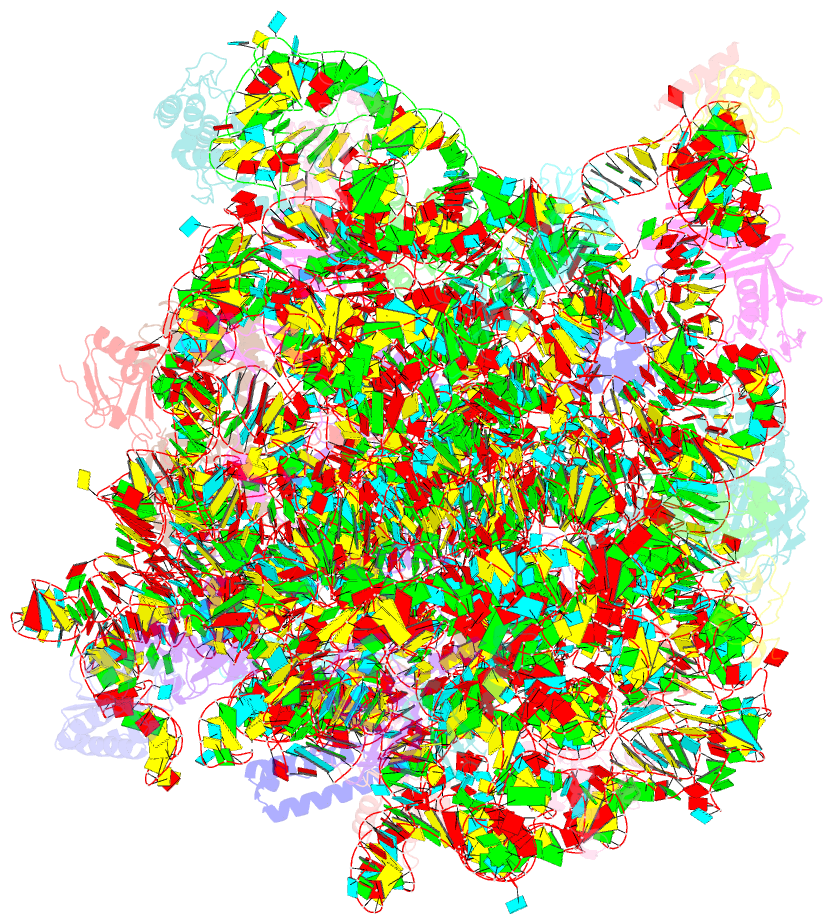Summary information and primary citation
- PDB-id
- 1yj9; SNAP-derived features in text and JSON formats;
DNAproDB
- Class
- ribosome
- Method
- X-ray (2.8 Å)
- Summary
- Crystal structure of the mutant 50s ribosomal subunit of haloarcula marismortui containing a three residue deletion in l22
- Reference
- Tu D, Blaha G, Moore PB, Steitz TA (2005): "Structures of MLSBK antibiotics bound to mutated large ribosomal subunits provide a structural explanation for resistance." Cell(Cambridge,Mass.), 121, 257-270. doi: 10.1016/j.cell.2005.02.005.
- Abstract
- Crystal structures of H. marismortui large ribosomal subunits containing the mutation G2099A (A2058 in E. coli) with erythromycin, azithromycin, clindamycin, virginiamycin S, and telithromycin bound explain why eubacterial ribosomes containing the mutation A2058G are resistant to them. Azithromycin binds almost identically to both G2099A and wild-type subunits, but the erythromycin affinity increases by more than 10(4)-fold, implying that desolvation of the N2 of G2099 accounts for the low wild-type affinity for macrolides. All macrolides bind similarly to the H. marismortui subunit, but their binding differs significantly from what has been reported in the D. radioidurans subunit. The synergy in the binding of streptogramins A and B appears to result from a reorientation of the base of A2103 (A2062, E. coli) that stacks between them. The structure of large subunit containing a three residue deletion mutant of L22 shows a change in the L22 structure and exit tunnel shape that illuminates its macrolide resistance phenotype.





